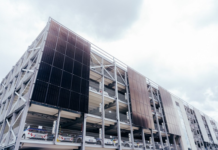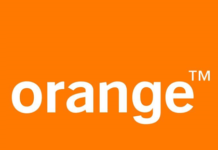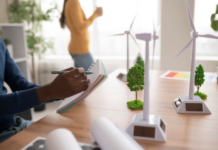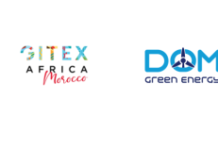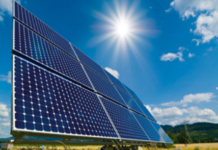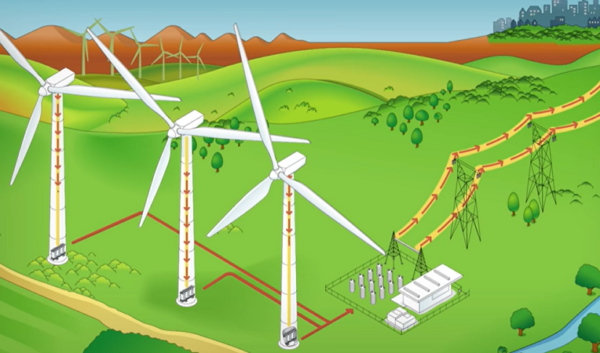
Wind power or wind energy is a form of renewable energy that harnesses the power of the wind to generate electricity. It involves using wind turbines to convert the turning motion of blades, pushed by moving air (kinetic energy) into electrical energy (electricity).
The terms “wind energy” and “wind power” both describe the process by which the wind is used to generate mechanical power or electricity. This mechanical power can be used for specific tasks (such as grinding grain or pumping water) or a generator can convert this mechanical power into electricity.
The Power of Wind
A wind turbine turns wind energy into electricity using the aerodynamic force from the rotor blades, which work like an airplane wing or helicopter rotor blade. When wind flows across the blade, the air pressure on one side of the blade decreases. The difference in air pressure across the two sides of the blade creates both lift and drag. The force of the lift is stronger than the drag and this causes the rotor to spin. The rotor connects to the generator, either directly (if it’s a direct drive turbine) or through a shaft and a series of gears (a gearbox) that speed up the rotation and allow for a physically smaller generator. This translation of aerodynamic force to the rotation of a generator creates electricity.
Wind turbines harness the wind—a clean, free, and widely available renewable energy source—to generate electric power.
Wind is a form of solar energy caused by a combination of three concurrent events:
1.The sun unevenly heating the atmosphere
2.Irregularities of the earth’s surface
3.The rotation of the earth.
Advantages of Wind Power
• Wind power creates good-paying jobs.
• Wind power is a domestic resource that enables economic growth.
• Wind power is a clean and renewable energy source.
• Wind power benefits local communities.
• Wind power is cost-effective.
• Wind turbines work in different settings.
Where is wind energy used and why?
Homeowners, farmers, businesses, and industries make use of clean, distributed wind energy to pump water (to use as drinking water, to irrigate farms, and more), to lower electric bills, and to reduce air pollution.
Wind Turbines
A wind turbine turns wind energy into electricity using the aerodynamic force from the rotor blades, which work like an airplane wing or helicopter rotor blade. When wind flows across the blade, the air pressure on one side of the blade decreases. The difference in air pressure across the two sides of the blade creates both lift and drag. The force of the lift is stronger than the drag and this causes the rotor to spin. The rotor connects to the generator, either directly (if it’s a direct drive turbine) or through a shaft and a series of gears (a gearbox) that speed up the rotation and allow for a physically smaller generator. This translation of aerodynamic force to rotation of a generator creates electricity.
Wind turbines work on a simple principle: instead of using electricity to make wind—like a fan—wind turbines use wind to make electricity. Wind turns the propeller-like blades of a turbine around a rotor, which spins a generator, which creates electricity.
Types of Wind Turbines
The majority of wind turbines fall into two basic types:
Horizontal-Axis Turbines
Horizontal-axis wind turbines are what many people picture when thinking of wind turbines. Most commonly, they have three blades and operate “upwind,” with the turbine pivoting at the top of the tower so the blades face into the wind.
Vertical-Axis Turbines
Wind turbines can be built on land or offshore in large bodies of water like oceans and lakes. The U.S. Department of Energy is currently funding projects to facilitate offshore wind deployment in U.S. waters.
Applications of Wind Turbines
Modern wind turbines can be categorized by where they are installed and how they are connected to the grid:
Land-Based Wind
Land-based wind turbines range in size from 100 kilowatts to as large as several megawatts.
Larger wind turbines are more cost effective and are grouped together into wind plants, which provide bulk power to the electrical grid.
Offshore Wind
Offshore wind turbines tend to be massive, and taller than the Statue of Liberty.
They do not have the same transportation challenges of land-based wind installations, as the large components can be transported on ships instead of on roads.
These turbines are able to capture powerful ocean winds and generate vast amounts of energy.
Distributed Wind
When wind turbines of any size are installed on the “customer” side of the electric meter, or are installed at or near the place where the energy they produce will be used, they’re called “distributed wind.
Many turbines used in distributed applications are small wind turbines. Single small wind turbines—below 100 kilowatts—are typically used for residential, agricultural, and small commercial and industrial applications.
Small turbines can be used in hybrid energy systems with other distributed energy resources, such as microgrids powered by diesel generators, batteries, and photovoltaics.
These systems are called hybrid wind systems and are typically used in remote, off-grid locations ( where a connection to the utility grid is not available) and are becoming more common in grid-connected applications for resiliency.




